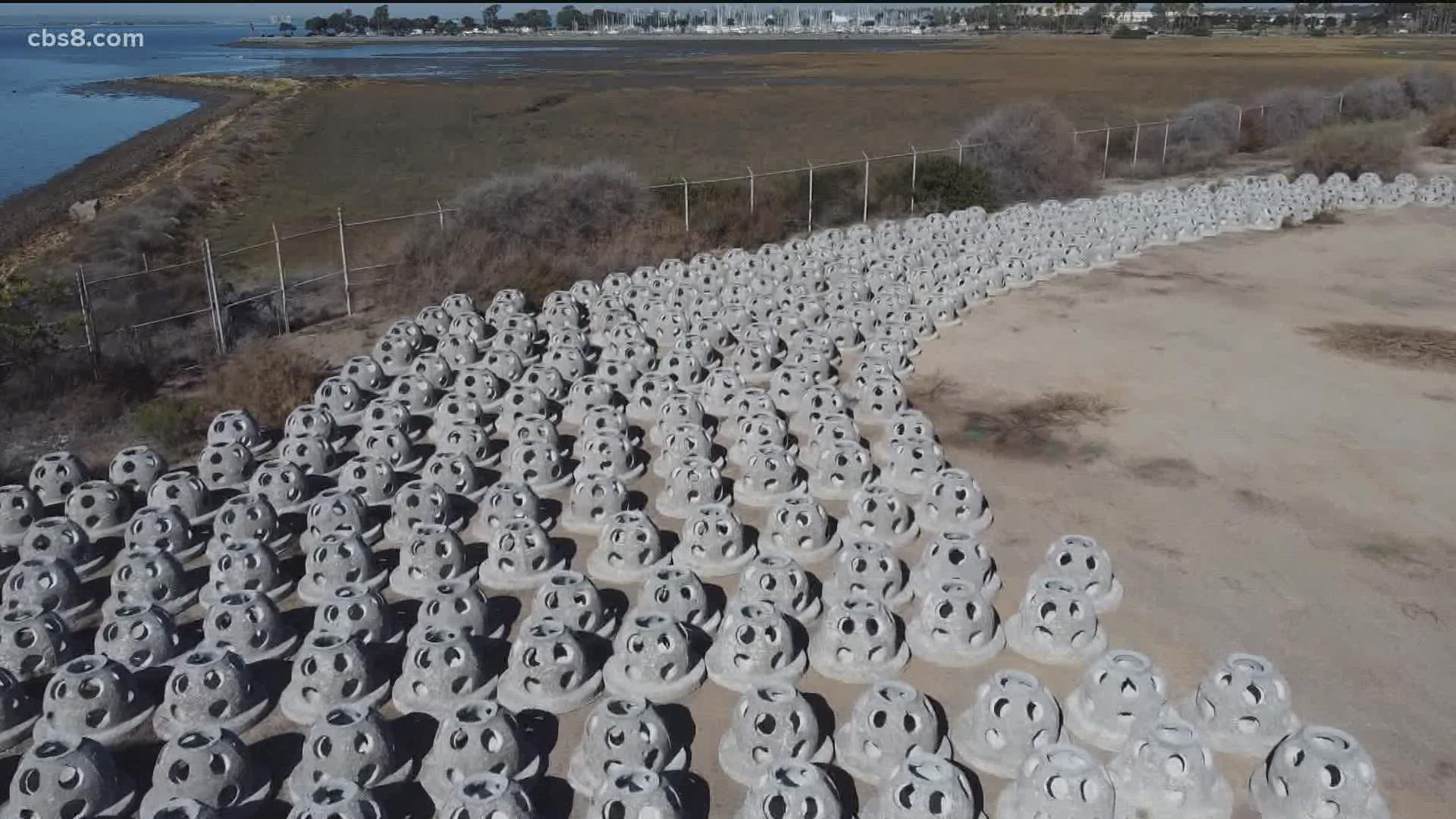SAN DIEGO — Tons and tons of seashells are going into the San Diego Bay as part of a major preservation effort that’s been years in the making. The oyster shells came from the Carlsbad Aquafarm and now they’re being brought to the San Diego Bay where they’ll have a whole new purpose.
While they may seem dry, brittle and useless, in the eyes of environmentalists these pacific oyster shells are a life source that they hope will bring many benefits to the bay.
For about seven years, Eileen Maher, the Director of Environmental Conservation for the Port of San Diego, has been working on this project with the main goal to clean the water and preserve the wetlands.
“It’s my favorite place to come. What we’re looking at is the roadway to Chula Vista Wildlife Reserve about 80 acres of wetlands we’ve done a lot of restoration out there. Every year this is the flight line for 100s of 1000s of shorebirds. And that’s above water,” said Maher.
Inside, there are thousands of fish, even the Eastern Pacific Sea Turtle, up to 80 of them have been spotted here including one that’s over 550 pounds.
If you are very quiet, they pop their head up and you can hear them breathe. And pretty soon, thousands of oysters will take residence in these waters.
We first introduced you to the Carlsbad Aquafarm in an Earth 8 report that highlighted the sustainability of oysters. These 10 – 12 million oysters keep the water clean, they attract tons of fish and birds, and help eel grass grow. They also sequester carbon dioxide. Even when the oysters become appetizers, their environmental benefits continue on. That’s because now about 200 cubic yards of them have been turned into these reef balls.
If there are broken pieces, they go into a mixture of cement, sand, and shells to create 300 reef balls, turning into essentially a giant housing unit for thousands of oysters.
At the aquafarm we were able see the life cycle of oysters
You see how they start off as small specs of sand. But once they grow they latch on to rocks or a reef and grow their own shell. The process that’s happening at the Agua Hedionda Lagoon, is expected to happen at the San Diego Bay.
01:53 when they reprodce they throw out 100s of 1000s of eggs so we think quite quickly those reef balls will be filled
The benefits will begin almost instantly. Each oyster filters 50 gallons of water each day. With thousands of oysters, the San Diego Bay should look clearer. And, when they reproduce, they throw out hundreds of thousands of eggs, which will fill reef balls.
And with cleaner waters, the wildlife will thrive. The endangered ell grass will keep on growing. More shells and more grass, means they’ll sequester more carbon dioxide.
The reef is also expected to help prevent erosion, help with storm surge, and sea-level rise. Some of the shells will also be placed on the shoreline to help birds.
Specifically, the Western Snowy Plover. These birds prefer shallow slopes without any vegetation to access food.
Turning an already peaceful shoreline abundant with nature, into more of a lifeline and catalyst for environmental change.
The Port of San Diego will take the reef balls out on a barge into the bay so we will get a better look at where they will go.
Watch Related: Stormwater pollution is a threat to our environment | How you can help keep San Diego waters clean (Nov 22, 2021)

